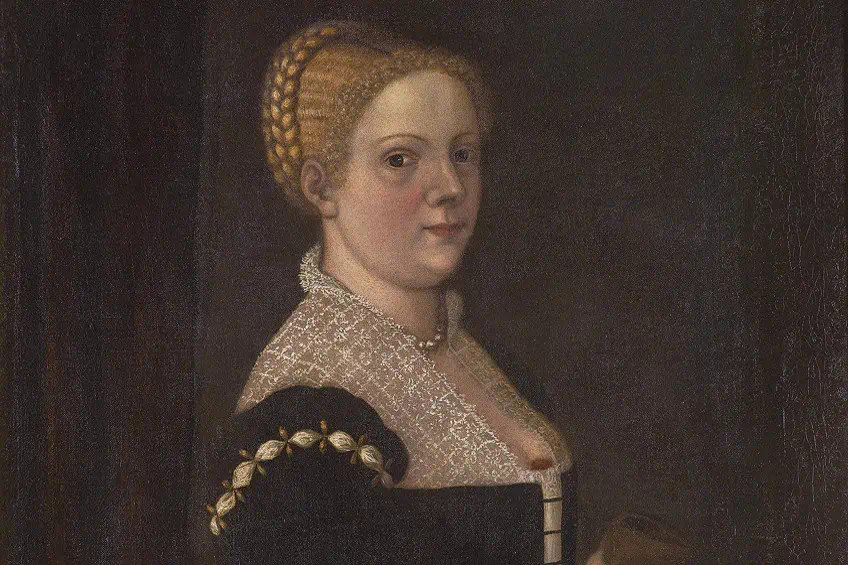Venetian Renaissance Painters – The Top 10 Artists to Know
The Renaissance, which took place from the 14th to the 17th century, is one of the most famous art periods. With some of the most renowned paintings in the world coming from this period, many of us are familiar with its dramatic scenes filled with grace and beauty. In this article, we will be taking a look at the Venetian Renaissance period (c. 1400 – 1580), as well as discuss 10 of the most important Venetian painters of the Renaissance.
Contents
- 1 What Was the Venetian Renaissance?
- 2 10 Important Venetian Renaissance Painters
- 2.1 Gentile Bellini (1429 – 1507)
- 2.2 Giovanni Bellini (1430 – 1516)
- 2.3 Vittore Carpaccio (1465 – 1525)
- 2.4 Giorgione (1477 – 1510)
- 2.5 Palma Vecchio (c. 1480 – 1528)
- 2.6 Sebastiano del Piombo (1485 – 1547)
- 2.7 Titian (c. 1488/1490 – 1576)
- 2.8 Jacopo Tintoretto (1518 – 1594)
- 2.9 Paolo Veronese (1528 – 1588)
- 2.10 Marietta Robusti (1555 – 1590)
- 3 Frequently Asked Questions
What Was the Venetian Renaissance?
The Renaissance period was a time of political, economic, cultural, and artistic transformation in Europe after the Middle Ages. It was a period characterized by its interest in the ideas and accomplishments of classical antiquity, and its endeavor to revive and exceed them.
The city of Venice was very different in comparison to other centers of the Renaissance such as Rome or Florence. Made up of a cluster of islands that are linked by canals and bridges, Venice could only be reached by boat until the 19th century.
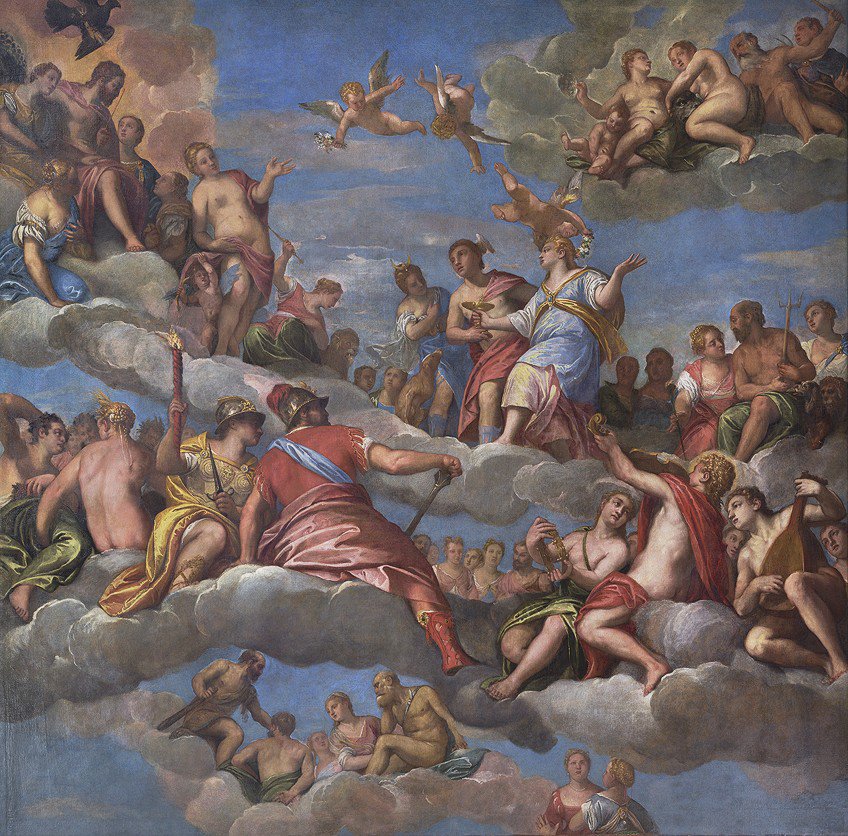
It had a secure republican government during the 15th and 16th centuries, and enjoyed wealth brought by trade, which the city owed to its unique location as a connection between Byzantium and Europe. People from merchant and aristocratic families became wealthier as the economy grew, leading to a demand for art, and therefore, more painters came forward. The ideals of beauty and splendor of the High Renaissance led Venetian artists to produce bold new magnificent artworks during the 15th and 16th centuries.
It was out of this period that the Venetian School arose, bringing a fresh take on oil painting and architecture by blending classical ideals and inspiration with a new push towards color and love for embellishment and detail distinct to Venice.
10 Important Venetian Renaissance Painters
Some of the Venetian Renaissance characteristics were the use of deep rich colors, an interest in the effects of light and tone, and that regardless of the subject matter, paintings conveyed the slight hedonistic message that life was to be enjoyed with a sense of revelry and pleasure. Below, we will find out how these characteristics showed in the work of Venetian Renaissance painters. We will take a look at the 10 important painters who greatly contributed to the creation of the Venetian Renaissance, as well as list some of their most famous paintings.
Gentile Bellini (1429 – 1507)
| Artist Name | Gentile Bellini |
| Dates | 1429 – 1507 |
| Where the Artist Lived | Venice, Italy |
| Nationality | Italian |
| Associated Art Movements | Renaissance |
| Famous Artworks | ● The Blessed Lorenzo Giustiniani (1445) ● Doge Giovanni Mocenigo (1478) ● Sultan Mehmed II (1480) ● Procession in St. Mark’s Square (1498) |
Gentile Bellini (1429 – 1507) was the brother of Giovanni Bellini (1430 – 1516), two painters who have been accredited to founding the Venetian School. Their father, Jacopo Bellini (1400 – 1470) was also a painter and during his career, brought many techniques of the Florentine Renaissance to the city of Venice.
Gentile produced a number of works that had a great influence on the Venetian Renaissance. He specialized mainly in portrait painting, becoming the Doge of Venice’s official portraitist, but also painted subjects that contained large groups of figures.
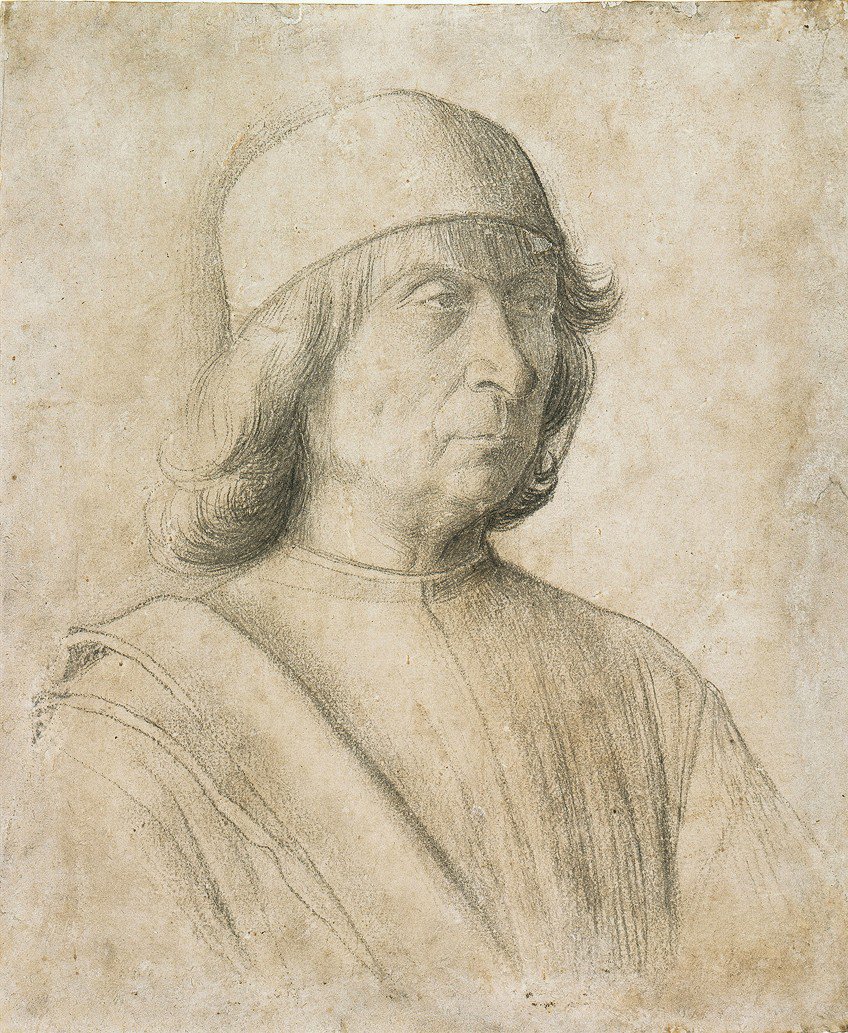
A palace fire destroyed many of the paintings he produced for the Doge in 1577, with his most notable surviving work being the portrait of the Doge Giovanni Mocenigo (1478). Gentile later became the official court artist for Sultan Mehmed II of Constantinople, where he was also Venice’s cultural ambassador. Gentile’s painting of Mehmed II was the Sultan’s favorite amongst the many Italian artists he asked to portray him.
Giovanni Bellini (1430 – 1516)
| Artist Name | Giovanni Bellini |
| Dates | 1430 – 1516 |
| Where the Artist Lived | Venice, Italy |
| Nationality | Italian |
| Associated Art Movements | Early Renaissance, High Renaissance, and the Venetian School |
| Famous Artworks | ● The Agony of the Garden (1458 – 1460) ● Pieta (1460) ● St. Francis in Ecstasy (1480) ● The Feast of the Gods (1514) |
Giovanni Bellini (1430 – 1516), as mentioned previously, was the brother of Gentile Bellini. He was a revolutionary of Venetian painting, shifting from classical trends onto a style that was more sensual and colorful. He is well-known for imbuing a tender human quality to the mythical and religious scenes that he painted.
At the forefront in the development of oil painting, Bellini dropped the egg and water tempera method and turned to oil paint to enhance the ambiance in his works, and mastered the use of light and color.

When it came to natural landscape, Bellini gave attention to detail and treated it with a respect that was lacking amongst the artistic elite who viewed landscapes with a conventional and narrow-minded contempt at the time. He was open to new ideas and artistic possibilities, and was inspired by outside artistic influences from Northern Europe and within Italy.
Vittore Carpaccio (1465 – 1525)
| Artist Name | Vittore Carpaccio |
| Dates | 1465 – 1525 |
| Where the Artist Lived | Venice, Italy |
| Nationality | Italian, Venetian |
| Associated Art Movements | Renaissance |
| Famous Artworks | ● Two Venetian Ladies (1490) ● The Meditation on the Passion (1495) ● The Triumph of St George (1502) ● Young Knight in a Landscape (1510) |
While very little is known about Vittore Carpaccio’s (1465 – 1525) early career and schooling, he is believed to have studied at the Bellini workshop and was part of the Venetian School. Considered to be the greatest narrative painter of the early Renaissance, he was greatly influenced by Early Netherlandish paintings, as well as the works of Antonello da Messina (c. 1430 – 1479), an early Renaissance artist.
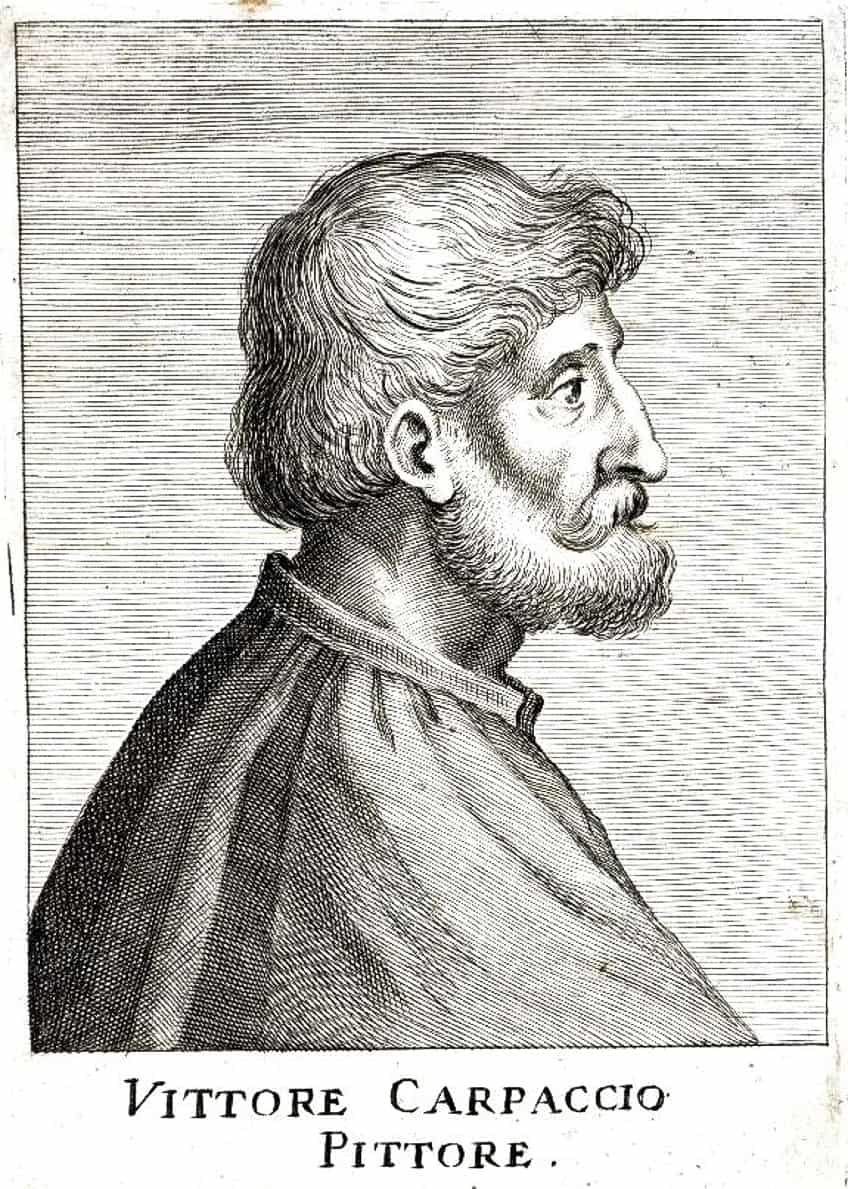
Carpaccio’s work, although conservative and showing little Humanist influence compared to other Italian Renaissance painters, is known for their realistic detail and dramatic directness, as well as his placement of realistically rendered figures into a coherent and orderly fashion.
His work places him within the legacy of Venetian history painting.
Giorgione (1477 – 1510)
| Artist Name | Giorgio da Castelfranco or Giorgione |
| Dates | 1477 – 1510 |
| Where the Artist Lived | Venice, Italy |
| Nationality | Italian, Venetian |
| Associated Art Movements | High Renaissance, the Venetian School |
| Famous Artworks | ● Portrait of a Young Man (Giustiniani Portrait) (1497-1499) ● La Tempesta (The Tempest) (1504-1508) ● Il Tramonto (1506-1510) ● Sleeping Venus (1508-1510) |
Giorgio da Castelfranco (1477 – 1510), otherwise known as Giorgione, is considered one of the most important figures in Western art history. He lived a short life and his career only lasted 15 years, but the poetic and elusive quality of his artworks, with no documentation of his patron’s requests or surviving record of Giorgione’s goals and preferences, leave the meanings of his works to passionate theories and speculations.
His works are not easy to classify and they challenge the modern painting style of his time. He too, abandoned the use of egg tempera in favor of oil painting, which allowed him to create more luminosity and dramatic effect in the scenes he painted.
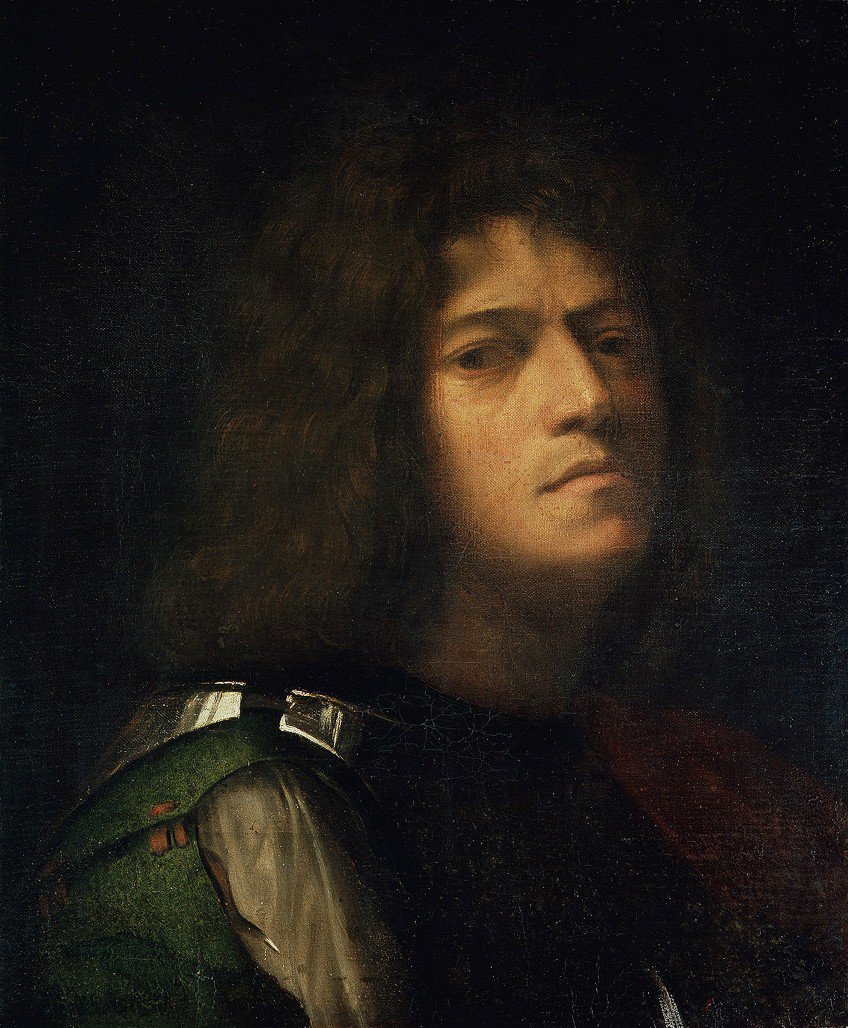
Giorgione is most well-known for his landscapes and portraits, and his work, some historians believe contributed to the legitimization of landscape as a genre in its own right. With regards to portraiture, Giorgione was much like his tutor, Giovanni Bellini in that he depicted his subjects with a holy reverence. While the status of Giorgione’s subjects were ambiguous, he paid delicate attention to detail which allowed their personality to be considered and an intimacy achieved between the subject and the viewer.
Palma Vecchio (c. 1480 – 1528)
| Artist Name | Palma Vecchio |
| Dates | c. 1480 – 1528 |
| Where the Artist Lived | Venice, Italy |
| Nationality | Italian |
| Associated Art Movements | High Renaissance |
| Famous Artworks | ● Portrait of a Poet (1516) ● A Blonde Woman (c. 1520) ● Virgin and Child with St Catherine and St Celestine, John the Baptist and St Barbara (1520 – 1522) ● Diana and Callisto, or Nymphs Bathing (1525 – 1528) |
The High Renaissance painter, Palma Vecchio (c. 1480 – 1528) was born with the name Jacopo Palma and is also called by the name Jacopo Negretti. Serina in the Bergamo area was his birthplace, but he spent his career near or in the city of Venice. Nothing is really known about Vecchio’s artistic training, but his style shows influence of Titian and Giorgione’s work.
Vecchio is most well-known for developing two types of domestic painting, the half-length portraits that he painted of beautiful women known as pseudo portraits, and the sacra conversazione.

The last means ‘holy conversation’ in Italian and usually refers to an altarpiece which depicts a group of attendant saints set in a unified space around the Virgin and Child in the center of one panel. This form of painting eventually replaced the polyptych in the 15th century.
Sebastiano del Piombo (1485 – 1547)
| Artist Name | Sebastiano del Piombo |
| Dates | 1485 – 1547 |
| Where the Artist Lived | Venice and Rome, Italy |
| Nationality | Italian |
| Associated Art Movements | High Renaissance, Mannerism |
| Famous Artworks | ● Salome with the Head of John the Baptist (1510) ● The Raising of Lazarus (1519) ● Pope Clement VII (1531) ● Christ Carrying the Cross (1540) |
Sebastiano del Piombo (1485-1547) or Sebastiano Luciani was the only significant artist at the time to combine the style of the Venetian School and the Roman School. He belongs to both the school of his native city of Venice where he made significant artist contributions, and that of Rome where he lived from 1511 until he died.
He became a serious painter later than his peers, at first playing the lute professionally. He was taught by Giorgione and Giovanni Bellini, the influence of which can be observed in his work.

After settling in Rome, del Piombo joined Raphael’s circle of artists and later came under the influence of Michelangelo, who he collaborated with. In his paintings, del Piombo used the Venetian school’s warm coloring and combined it with the sculptural drawing and clarity of Rome. He came to be one of the best portraitists in Rome, with an unparalleled reputation.
Titian (c. 1488/1490 – 1576)
| Artist Name | Tiziano Vecelli or Titian |
| Dates | c. 1488/1490 – 1576 |
| Where the Artist Lived | Venice, Italy |
| Nationality | Italian, Venetian |
| Associated Art Movements | Italian Renaissance, High Renaissance |
| Famous Artworks | ● Amor Sacro and Amor Profano (1515) ● The Assumption of the Virgin (1516 – 1518) ● The Venus of Urbino (1538) ● The Rape of Europa (1560 – 1562) |
Titian (c. 1488/1490 – 1576) is the English name for Tiziano Vecelli or Vecellio, and is viewed as one of the most influential and important artists of the Renaissance. He mainly painted landscapes, portraits, religious and mythological works and he is renowned for using bold color, which he obtained by using pigments that were rare and in their most saturated state. His style was innovative as he combined ideas of the High Renaissance and Mannerism to produce works that were ahead of their time.
He emphasized contrasting shades by focusing on the effect of light using techniques like chiaroscuro, and through this, he created the separation between Florentine art and Venetian art. Artists of the Renaissance in Florence focused on line, while Venetian Renaissance artists defined their style with color.
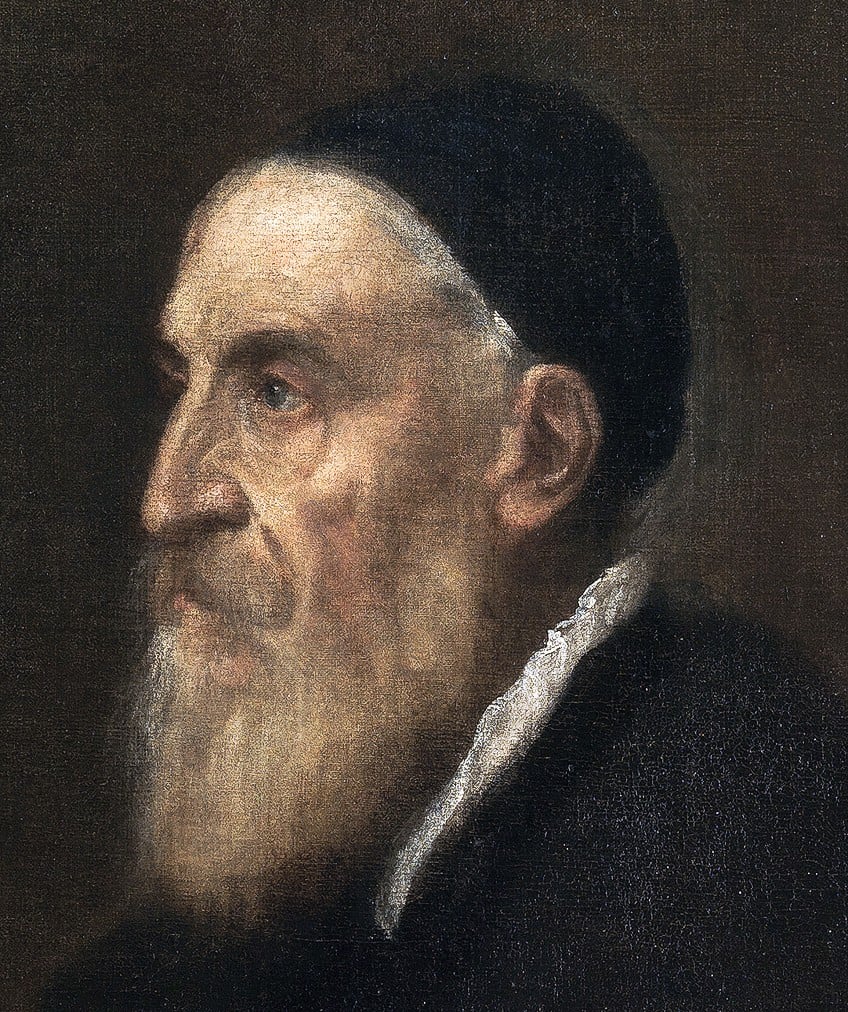
Titan’s later work was unique amongst his contemporaries, as it held a sense of movement and emotion that set him apart. His work was characterized by the use of looser brushstrokes, bringing more expression to his paintings, while he also used his fingers to apply and blend paint. He almost only worked with oil paints which allowed him to build up layers of glazes to capture with great detail and softness the texture and appearance of the human form. This is especially seen in his rendering of nude female forms which were uncommonly sexually suggestive for the time.
Jacopo Tintoretto (1518 – 1594)
| Artist Name | Jacopo Robusti or Tintoretto |
| Dates | 1518 – 1594 |
| Where the Artist Lived | Venice, Italy |
| Nationality | Italian, Venetian |
| Associated Art Movements | Renaissance, Mannerism |
| Famous Artworks | ● Miracle of the Slave (1548) ● St Mark’s Body Brought to Venice (1564) ● The Origin of the Milky Way (1575) ● Il Paradiso (1588 – 1594) |
Jacopo Robusti (1518-1594), better known by his nickname, Tintoretto worked and lived in Venice for most of his life and was also part of the Venetian School. His nickname means, ‘little dyer’, which he received from his father who was a tintore, a dyer. There are some accounts stating that he was taught by Titian for a while, but other than that little is known about Tintoretto’s professional training.
Along with Veronese, Tintoretto became one of the best painters in Venice after Titian died.
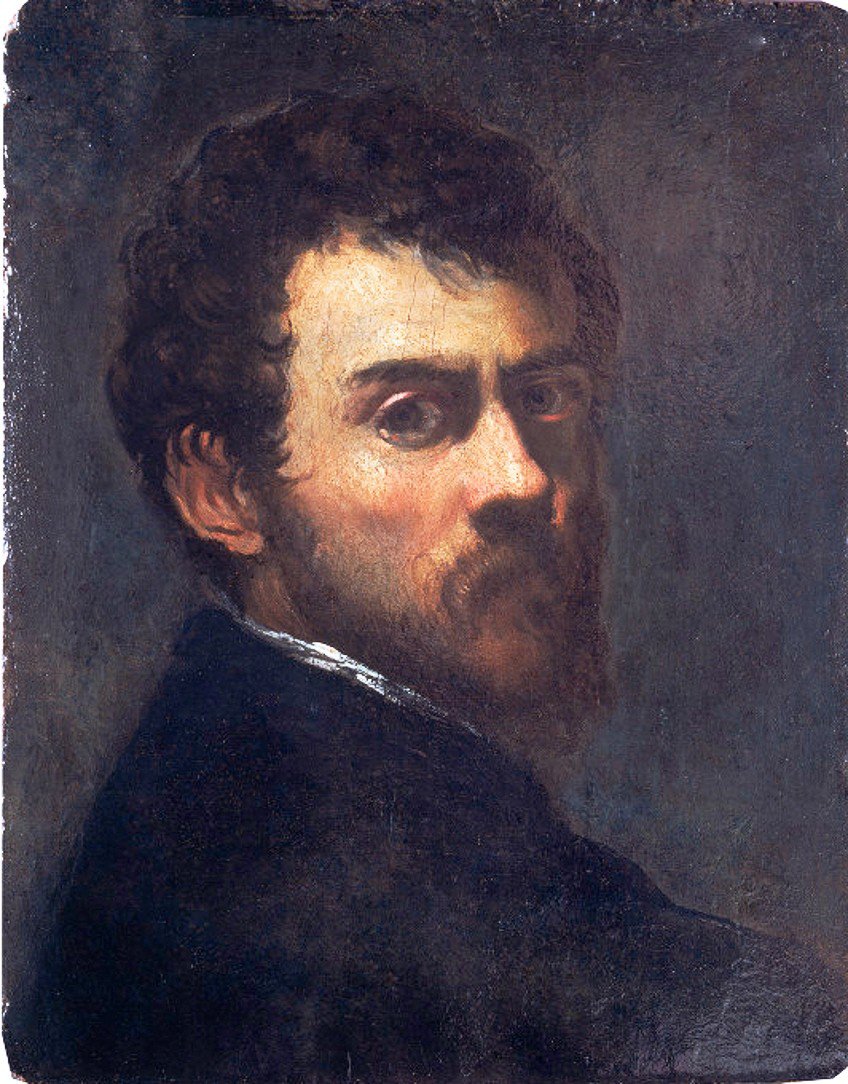
The largest canvas painting in the world is one that he made as a commissioned piece for the Doge’s palace entitled, Il Paradiso (1588-1594), created at the pinnacle of his career. Tintoretto’s work is known for its dramatic lighting and luminosity, and the speed with which he painted them. This approach was radical for his time, as he produced works with dexterity and visible traces of brushwork on the canvas which would later influence generations of painters after him.
Paolo Veronese (1528 – 1588)
| Artist Name | Paolo Veronese |
| Dates | 1528 – 1588 |
| Where the Artist Lived | Venice, Italy |
| Nationality | Italian, Venetian |
| Associated Art Movements | Renaissance, Mannerism |
| Famous Artworks | ● Jupiter Expelling the Vices (1556) ● The Wedding Feast at Cana (1563) ● The Feast in the House of Levi (1573) ● Venus and Adonis (c. 1580) |
Paolo Veronese (1528 – 1588) was an important figure in the Venetian Renaissance during the late 16th century. He was born in Verona, Italy, and was an apprentice to the artists, Antonio Badile and Giovanni Francesco Cavoto, later moving to Venice in 1553 to work as a professional artist. His first great commission were the frescoes in the Consiglio dei Dieci (The Hall of the Council of Ten), a chamber in the Doge’s Palace.
These frescoes, like the panel of Jupiter Expelling the Vices (1556), strengthened his status in the Venetian School.
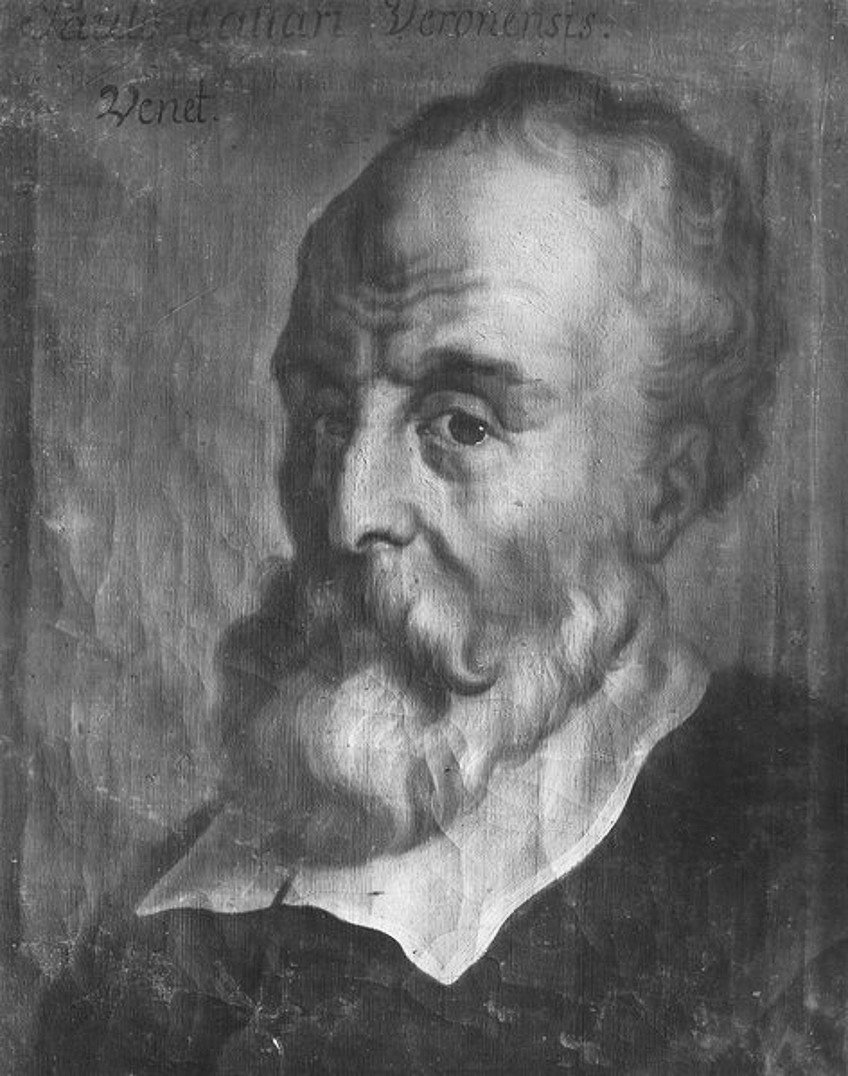
Veronese later became well-known for his huge narrative religious and mythological paintings. These were often crowded scenes which he depicted in an elaborate and dramatic way, with sumptuous color and Renaissance architecture that he classicized. The connection between the idea of splendor and opulence in Venice during the Renaissance and these artworks is undeniable.
Marietta Robusti (1555 – 1590)
| Artist Name | Marietta Robusti |
| Dates | 1555 – 1590 |
| Where the Artist Lived | Venice, Italy |
| Nationality | Italian, Venetian |
| Associated Art Movements | Renaissance |
| Famous Artworks | ● Portrait of Ottavio Strada (1567 – 1568) ● Self-Portrait (1580) ● Old Man and a Boy (1585) ● Portrait of a Venice Gentlewoman with a Necklace (16th century) |
The leading female artist of Venice during the Renaissance was Marietta Robusti (1555 – 1590). Women are often excluded from the record of Venetian Renaissance artists, but Robusti made an equally valuable contribution to this art period as her male contemporaries. As she was a woman, she could receive formal training in the arts, but she learned through her father and brothers who were also artists.
Robusti was her father’s apprentice in his studio when she began to receive invitations from important figures to be a court painter, such as the King of Spain, Philip II, and Emperor Maximillian.
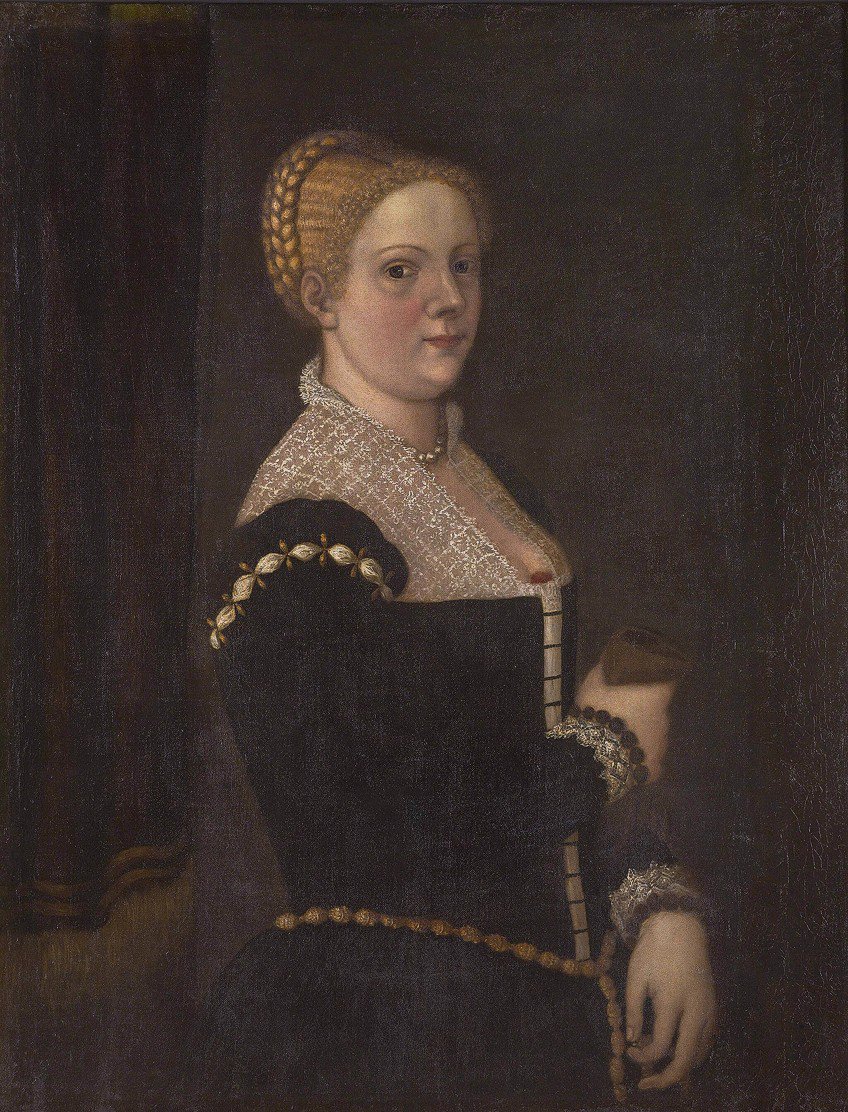
However, her father refused the offers on her behalf as he did not want her to leave the city. Robusti instead painted members of Venetian society as commissions, establishing a good reputation as a portraitist. Unfortunately, a few of her works were not accredited to her. The only work accredited to her is her Self-Portrait (1580).
In conclusion, Venice was quite unique in comparison to other centers of the Renaissance. With their use of rich color and love for embellishment, Venetian artists brought a fresh approach to oil painting and architecture. By blending ideals and inspiration of the classical period with their own innovative and bold contributions, they put their own mark on the world of art and the Renaissance.
Frequently Asked Questions
What Is Venetian Renaissance Art?
Venetian Renaissance art is art created during the Renaissance period in Venice. Venetian painters of the Renaissance produced bold new artworks during the 15th and 16th centuries that were different from other parts of Italy during this period. It was also during this time that the Venetian School arose.
What Are Some of the Venetian Renaissance Characteristics?
Some of the Venetian Renaissance characteristics are the use of deep, bold color, and embellishment in paintings, a keen interest in the effects of light, as well as conveying a message of splendor and opulence that was much enjoyed during this time in Venice.
Jaycene-Fay Ravenscroft is a writer, poet, and creative based in South Africa, boasting over 6 years of experience working in a contemporary art gallery. She earned her Bachelor of Arts degree with majors in Art History and Ancient History from the University of South Africa, supplementing her studies with courses in Archaeology and Anthropology. Driven by a passion for learning, Jaycene-Fay finds inspiration in symbology and the interconnectedness of the world. Trained to analyze and critique art, she is enthusiastic about delving into the meanings behind each artwork, exploring its ties to the artist’s cultural, historical, and social context. Writing serves as Jaycene-Fay’s means of researching, sharing knowledge, and creatively expressing herself. For artfilemagazine, Jaycene-Fay writes articles on art history with a focus on historical paintings.
Learn more about Jaycene-Fay Ravenscroft and about us.
Cite this Article
Jaycene Fay, Ravenscroft, “Venetian Renaissance Painters – The Top 10 Artists to Know.” artfilemagazine – Your Online Art Source. October 26, 2023. URL: https://artfilemagazine.com/venetian-renaissance-painters/
Ravenscroft, J. (2023, 26 October). Venetian Renaissance Painters – The Top 10 Artists to Know. artfilemagazine – Your Online Art Source. https://artfilemagazine.com/venetian-renaissance-painters/
Ravenscroft, Jaycene Fay. “Venetian Renaissance Painters – The Top 10 Artists to Know.” artfilemagazine – Your Online Art Source, October 26, 2023. https://artfilemagazine.com/venetian-renaissance-painters/.


